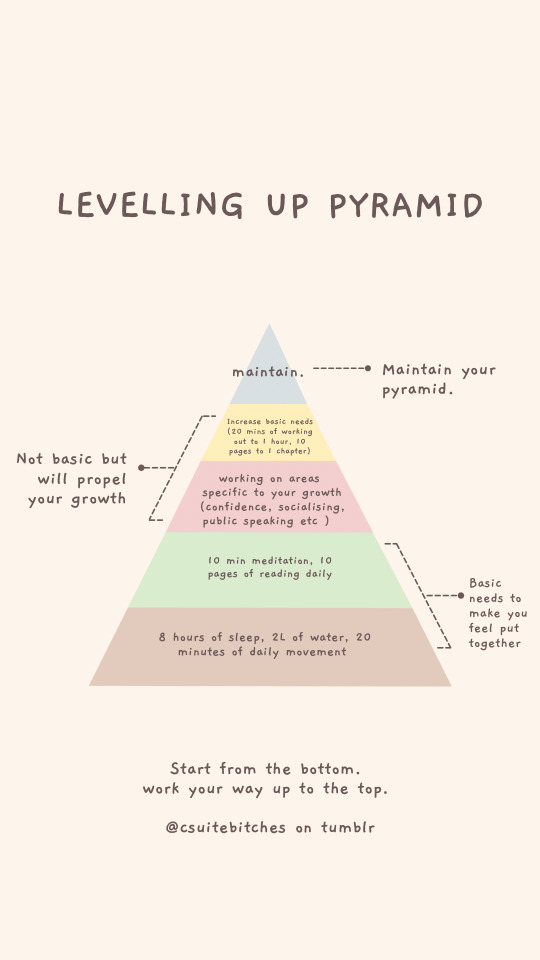#C-level
Explore tagged Tumblr posts
Text
How to Get an EMBA GMAT/GRE Waiver
How to Get an EMBA GMAT/GRE Waiver How to Get an EMBA GMAT/GRE Waiver for a Top-Tier Program — pursuing an Executive MBA (EMBA) from a top program like Wharton, Columbia, NYU Stern, or MIT Sloan offers unparalleled opportunities for career advancement and personal growth. However, the admissions process for these prestigious programs can be demanding, often requiring a GMAT or GRE score as part…
#C-level#executive#finance#Management#tech#Business School#Columbia#EMBA#GMAT waiver#GRE Waiver#MIT Sloan#NYU Stern#Wharton
0 notes
Text
Dall’antica saggezza al futuro dell’impresa: Business Leaders Summit e CEO Italian Summit & Awards. Roma. Milano
Fiera Milano ispira i top manager con i grandi maestri del passato e strategie innovative per affrontare le sfide del futuro.
Fiera Milano ispira i top manager con i grandi maestri del passato e strategie innovative per affrontare le sfide del futuro. Due eventi d’eccellenza per il top management italianoRoma, 26-27 novembre 2024 | Milano, 4 dicembre 2024 – Con il Business Leaders Summit a Roma e il CEO Italian Summit & Awards a Milano, Fiera Milano, attraverso la sua divisione Business International, offre due…
#Aldo Cazzullo#Alessandria today#amministratori delegati#Business International#Business Leaders Summit#C-level#capitale umano#CEO Awards#CEO Italian Summit & Awards#conoscenza e cultura#creatività e disciplina#Cyrille Schwellnus#driver di crescita#economia italiana#eventi business Italia#eventi Fiera Milano#Fiera Milano#Forbes Italia#formazione manageriale#Frecce Tricolori#futuro del management#Google News#Hotel Principe di Savoia#impresa contemporanea#Innovazione#Innovazione sostenibile#integrazione processi aziendali#italianewsmedia.com#Italo Calvino#Leadership
0 notes
Text

that one image of the mom beating the mario level. you know the one
#someone compared them to ducklings in the titans army server. 10/10#luke is the expert of being handed a gameboy and smoking a hard mario level when asked#titans army#luke castellan#alabaster torrington#alabaster c torrington#ethan nakamura#chris rodriguez#silena beauregard#percy jackson#percy jackon and the olympians#percy jackson and the olympians#heroes of olympus#riordanverse#hoo#my art
2K notes
·
View notes
Text
Level Up Pyramid.
I will never stop yapping about how important it is to get your basics right. If your base routine is not solid, no matter what you add on to it, it will never be sustainable.
most of us get motivated in the middle of the night, build an elaborate routine that we’ll follow for less than 2 days and we’re back to square one.
I get so many asks about girls getting stressed over their routine and how they should solve the issue. If your routine is stressing you out, you need to cut. It. Down.
this is a pyramid that will teach you to get the basics down and in what order.
if your foundation is strong, your base routine will be an unshakeable of your life. if it is an unshakeable part of your life, you will slowly but surely get better at those things. as you get better at those things, your confidence will increase. as your confidence increases, you will be ready and motivated to take on more challenges.

#c suite#strong women#powerful woman#ceo aesthetic#personal growth#productivity#getting your life together#that girl#balance#Routine#confidence#level up#glow up#2024
3K notes
·
View notes
Text
i feel like dream in human aus is usually characterized as being more stoic and stern while hob is more easygoing, but i think it would be funny to have a university au where hob is the professor who's like "no work is deserving of 100%. find 27 more sources and do it again" while dream is just like "they put their dreams into it, hob 🥺 A+! A+! A+! A+!"
#hob: you got this date wrong in the paper. c-#dream: i like all the misspelled words. really adds personality to the story. A+#hob is the ideal teacher for students whove always gotten good grades easily and need someone to challenge them more#dream is the ideal professor for students who struggle with self confidence and need to feel more capable#hob should only teach 400 level senior classes. dream teaches Intro to Poetry 😂#one time they swap papers to grade and then hob's like 'dream why did you give all my students As' dream's like 'they tried their best 🥺'#hob's like THEYRE HISTORY MAJORS DOING THEIR DISSERTATION AND YOU LET ONE OF THEM SPELL HATE AS 'H8'#dream: why'd you give my students Bs :(. hob: one of them turned in a coffee stain as a poem? wth#dream: everything is poetry hob. it's abstract. oh my god you dont get it at all 🙄#dream's unconventional method does work tho. he has an uncanny ability to get even the most disengaged students to care SOMUCH about poetry
508 notes
·
View notes
Text

you always land on all fours
#umineko#umineko spoilers#ikuko hachijo#ikukos turn for a more serious piece... the old man has reigned for too long#now. INCREDIBLY LONG INCOHERENT TAGS RANT INCOMING FAIR WARNING HAS BEEN GIVEN:#it makes me so so sad how little discussion there is about specifically ikuko because imho she fits so neatly into a lot of the more#overarching Big Themes of the game in a way that i have not ever really seen people take notice of or point out in a meaningful way#like even just off of the top of my head. the significance of names and what it means to go by a name that's Not Yours (she has like 4+)#what it Means to be a witch how it represents a person's deepest insecurities and flaws & how its at its core a coping mechanism#the fact that it takes two to create a universe and trying to do it on your own anyways has the capacity to bring you intense misery#^ (how she's shown to be extremely dismissive of her own work and skill until a collaborator comes into her life and helps/encourages her)#and even the family/patriarchy/misogyny stuff that is so prevalent in the rest of the game comes back around to her. even her Only Friend#(young&stupid atp to be fair) remarks that shes Weird for being unmarried + the little she does say about her past invites the question of#to what extent her self-image stems from her family deeming her a freak outcast & effectively disowning her while celebrating her brothers#and i have lot in my mind about the witch thing specifically because i think her particular situation is very reflective of what umineko's#entire magic system and fantasy facet as a whole is meant to represent for an individual. from what little we see of (what is presumably)#her Real personality she is shown to be deeply self conscious in a way that is JARRINGLY diametrically opposed to both 1.) what we see in#featherine and 2.) what we see when she is acting as a Public Figure. because both of the above are very much purposeful acts that she is#putting on in order to obfuscate her true self. and i have always been very resolute & adamant about not totally equating her to featherine#not only because im very firmly in the camp of “featherine is the avatar of the Pen Name & tohya is part of her too” but also very much b/c#i feel very strongly that the stark differences between the two are very centrally relevant to her character & her psyche. as is the case#with most other witches featherine's personality traits serve to reveal/magnify a lot of ikukos inner workings by playing on her#insecurities/reversing them e.g. ikuko being very quick to downplay her skill/achievements becomes featherine being the COMPLETE opposite#to the point where she barely registers even other witches as living beings rather than just fun touys. BUT even though i do champion the#ikuko/featherine separation so hard i ALSO think it is purposefully relevant that at first glance the line between them seems so blurry#her introduction implying a more nebulous separation between her reality/fantasy counterpart is i think is an intentional move on her part#like it is part of the front she is putting up when acting as the Author. as opposed to Ikuko the person who we (in a way ironically very#similar to the way that the Real Battler is presumably only shown during the boatscene) only very briefly get to see take up screentime#which even on a meta level lines up very well with her apparent underlying nature as a like. extremely private largely reserved/shy person#hit tag limit but if by some miracle anyone is still reading this thank you... please see ikuko with the love she deserves... ok ily byeee
369 notes
·
View notes
Text

irresponsible illegal getaway drive
#pleuart#pleucas#bsd#bungo stray dogs#illustration#dazai osamu#chuuya#chuuya nakahara#dazai#skk#soukoku#dazai can’t drive#skk being badass and scary as children#<<<#skk being badass and scary by accident when in reality#one of them cannot drive despite being a super genius (he can’t ride a bike either)#the other can level a building but has a well worn step stool to reach the top shelf#they were teenagers together despite never knowing what it meant and that is :c peak mafia skk dynamic idc
6K notes
·
View notes
Text

more trying to figure out a nice way to draw roan with whatshisface and a redesign of anja of 2016 fame with the tiger colours extending all the way up
i will have to start designing clothing for them otherwise u won't believe me when i say they have an extreme modesty culture
#i traced that tiger body i'm too tired to remember how to draw those right now. the effort level could not be lower#real og followers from my furry blog days will recognise anja maybe idk#i will grandfather in that fur colour for them but probably won't be doing any more unusual colours for anyone else. b/c i'm mean#ironwall
443 notes
·
View notes
Text
“*inside joke admin doesn’t understand*” “F—K!”
#this is how williams will level the financial playing field. tricking other teams into swearing so they lose money to fines#WHAT IS CARLOS SAYING TO MAKE HIM SWEAR SO LOUD#“I’m gonna dick you down so hard tonight and pump your ass full of my cum” Charles: fuck (me)!#carlos sainz jr#scuderia ferrari#f1#charlos#c2#c square#williams racing#lewis hamilton#alex albon#Lewis and Alex just chilling at the side#also why were those daps so clean#I wouldn’t have noticed that if it wasn’t for isack#also the way charlos went for that extra hand/arm touch after the dap#china 2025#are they speaking in Italian to annoy the brits
245 notes
·
View notes
Text






Interview With The Vampire – 2.03: No Pain
#interview with the vampire#cinematv#filmtvcentral#userthing#smallscreensource#dailyflicks#userstream#tvarchive#filmtvtoday#cinemapix#usersource#iwtv spoilers#lesmand#the level of c*nt between these two is off the charts#AHHHHHHHH
621 notes
·
View notes
Text
love when you can ask the Narrator why the Princess is a Princess and he's like 'well i uhhhh YOU did that. maybe it's because uh... something something about her being above you... but still approachable... look i don't want to analyze or anthropomorphize your--' my guy. i am a primal being of Order and Eternity and Shaping. You're the one who convinced me I was some dude and were quite willing to take credit for shaping my view on the world through narration five seconds ago. Are you gonna look me in the eye and tell me the desire to interpret something worthy of adoration and more powerful than me as a dommy princess is written in the very nature of the universe or are you going to show me your browser history like a man
#this is a joke but the 'so where did i get the Idea of a princess from??' still stands#since we remember nothing and don't seem to have many ideas about like. what the world looks like#but when given the conception of 'we're a hero' from the narrator's Quest#we immediately go to 'so the thing you're telling us to kill is a Princess' -> i.e something I'm not SUPPOSED to kill#and in fact am supposed to respect and cherish#and/or pledge eternal loyalty to#(and then on a deeper level we KNOW that we're the dragon#we're the biggest threat to her we're what has the power to trap her and keep her here#we're a monster just like her)#but my point remains. as a god-entity stripped of memory where did we get the idea of a (human/like) Princess. do we still have like...#the threads of common narratives sort of built into our structure b/c we're the god-half concerned with Shaping and Naming and Order?#that would kind of slap#anyway uh. dragging myself offstage now#slay the princess#slay the princess spoilers#stp spoilers
2K notes
·
View notes
Text
Crafting a Personality and Capitalising on it




How do we craft a personality that is socially charming yet true to our roots?
How do we mingle and meet new people without feeling awkward or shy about it?
How do we not lose ourselves while following all these blah blah etiquette rules?
Welcome to part 2 of my Chic Girl Mentality series. 🤍
Today, we will focus on crafting a personality that is still you but better.
First, let’s talk about people in social settings. You’ll meet people who are confident, secure and socially charming. You’ll meet quiet people who may be equally socially charming or just very shy and conscious. You’ll meet the braggers and the doe-eyed followers. There’s a lot of different types of people in the world and knowing how to gracefully navigate most of them is nothing but a learned art.
People, regardless of their bank balance, are insecure of what they do not have yet. This can be looks, money, experience, lifestyle, and so on. How do we capitalise on this without exploiting or manipulating anyone?
By knowing how to tell a story.
That doesn’t mean that you need to become a public speaker or politician, it just means that you need to be able to craft intriguing stories about yourself, using your own life and experiences, to “sell” an interesting version of you socially. We’re all interesting people but only a few of us know how to say that we’re interesting without saying that we’re interesting.
Experience
People, even those with money, will always be more attracted to those who have experiences, especially, unique ones. Whether it’s travelling to exotic locations or trying new culinary destinations, or wearing unknown designers, knowing obscure artists or writers, or being at the top of your industry… experience is the most important thing to cultivate first. You already have experience. If you went to school, high school, college, joined clubs, your first job, any travelling, etc - these are all experiences.
Make a list of 5 of the most interesting experiences you think you have.
Hobbies and interests
Have a couple of lowkey hobbies that you feel enthusiastic about. Whether it’s doing some charity work on Sundays, or cooking, or pottery, whatever it is, keeping a hobby is healthy.
There should be something to you that an acquaintance can remark about: “CSB? Oh yes, I’ve heard that she’s a great dancer.”
Vulnerabilities
Certain vulnerabilities must never, ever be shared. It will 100% be used either as gossip or blackmail.
However, coming across as someone with no weaknesses is rather untrustworthy- it makes the other person feel that you’re clearly hiding something.
Make a list of vulnerabilities that are small and you don’t mind sharing. These should be vulnerabilities that will never ruin your reputation in any form but can be used as a form of bonding with empathy.
And make a list of hard core vulnerabilities you know you should never share with anyone. Keep it memorised rather than written down.
Experience + Hobbies or Interests + Safe Vulnerabilities = Personality
Storytelling
Now that you have some experience, hobbies, interests, and your “safe” vulnerabilities sorted even if it’s limited - what will make it stand out is the art of storytelling. Some storytellers can make even the most mundane experiences sound magical - it’s all in the words and delivery. There’s a reason why every Holy Book is a story, packed with lessons and morals - it’s impactful, easy to remember and recall and relatable. Craft your experiences into stories. Use those 5 experiences that you noted down and start writing them down as stories.
Take up an online storytelling class or watch videos. Start honing this skill by writing and reading good literature.
Refine your 5 experiences further. Run it through chatGPT, say them out loud and most importantly- start testing them out on people. See what makes them chuckle and what doesn’t; what makes them empathise and what doesn’t.
A famous comedian whose name I can’t remember does the same thing. He creates his set. He goes to a small pub and tries it out on the audience there. And the first set is always the first. The audience may not laugh at his jokes, they might boo him or sometimes, he might get a laugh out of them. But every time, he goes home and refines his set further. Once his set is fully refined, and he accomplishes his goal of the audience peeling with laughter at every joke, that’s when he goes on national TV / on tour etc etc.
The most important thing is to craft your stories of your experiences in a way that it delivers the value you want the person to remember about you.
For instance, if I want to be seen as creative and innovative, I won’t tell the person in front of me, “oh, I’m soo innovative and creative!”
Rather I will weave that into a story. “When I was 24, at my first job in the advertising space, we were losing clients left and right. And one weekend, I was on a trek on the mountains - it’s one of my hobbies - this idea hit me, and I suddenly knew exactly how to get our clients back. My team was hesitant about my idea, and we got a lot of pushback, but we went ahead. The night before my launch I was so nervous, I got hardly sleep. And you won’t believe it, but the idea worked! The response was fantastic.”
Let the other person come to the conclusion of you being innovative and creative. Human beings love to deduce things and jump to conclusions and provided you set the context the right way, you should be able to project the version of you that is the best part of you.
Vocabulary
A sign of a good education- even if you don’t have it - is a diverse vocabulary. I’ve always had a little more respect and awe for those who are articulate, can speak smoothly and speak confidently. I’ve noticed that my American friends, for instance, tend to talk fast with lots of filler words, and sentences tend to end with a pitch up instead of down, which to me indicates hesitation or indecision. Speaking slower, ending your sentences with pitch going down to indicate a full stop rather than up makes you seem like a refined speaker even if your subject is utterly stupid.
Body language and mannerisms, social interaction
Watch old classic Hollywood movies to really understand this - especially romantic ones. Choose ones with a femme fatale or siren-like female lead, and watch how she enraptures the male lead or the audience around her.
A combination of fantastic storytelling and body language will take you places beyond your dreams. Some of the biggest frauds, scammers, politicians, criminals are also some of the best storytellers. Humans are attracted to stories, we pick up body language intuitively, we can sense when someone is nervous or isn’t. Unfortunately the world isn’t a kind place and will not necessarily help you out of your shyness- in fact, that might just make you the best target for exploitation.
Storytelling + Vocabulary + Body Language = Your Best Personality
#c suite#personal growth#productivity#powerful woman#ceo aesthetic#getting your life together#balance#strong women#that girl#Personality#building a personality#level up#level up journey#glow up#socialising#social settings#how to talk#how to be popular#how to change#how to be interesting#Siren
872 notes
·
View notes
Text

An Observant popped into existence, seemingly without a care in the world.
✨ Ghouls and Gangs!!! ✨
The Final Chapter(™) of Ghosts, Legacies and CPS by @ace-0f-roses and @karnia-queen, it's been such a pleasure to participate to @dpxdcbigbang's event to create all of these, especially for such an amazing story 😭💕
I really have to take the time to go back to it later to draw up the thumbnails that couldn't be done and the ideas that were just so tasty and hard to choose between
#dpxdcbang2024#g&g24#dpxdc#dpxdc art#danny fenton#tim drake#dp observant#observant#fanart of fanfic#ghosts legacies and cps#back to studies for me so I can bring the vibes in my head properly onto the actual drawing!!!#I can't wait to see how much cooler I'll manage to make some of GL&C scenes pop out with a little level up!
183 notes
·
View notes
Text


Dan Stevens as Noah Dorfman in CRIMINAL ACTIVITIES (2015)
#level 1000000 c*ntology event..#dan stevens#criminal activities#danstevensedit#sorry ok im done posting gifs of him . FOR NOW
412 notes
·
View notes
Text
I don't know, man, there's something so sweet and simple with Buck and Tommy. Even if it started with a small drama, Tommy is so stable and level-headed (so far at least), it feels good even as a viewer. There's no push-pull bs, and it lets Buck understand himself in peace. Even with the whole jealousy thing, Buck was safe all along. They're just two nice men gently falling for each other.
#bucktommy#tommy kinard#evan buckley#i hope they keep things that way#i'm a huge sucker for angst but this storyline is a great choice#it's not hallmark level of awfully syrupy and corny but it's simple and nice#bvddies can rage all they want they can't take that away from us now#it's c a n o n
429 notes
·
View notes
Text

"balder than she remembered" is a great catelyn pov quote on its own but also could be proof that stannis started going bald pretty young. i mean he's only 35 max here and it must have been some years since cat could have seen him previously--already somewhat balding--bc it's not like he was ever known to visit the north before asos/adwd. so fitting that stannis is not only the only known bald baratheon, he's also the type of guy to start losing his hair in his late teens/early 20s at most. maybe that one officialish art of him looking older than 19 during the siege of storm's end isn't that off. art true to the spirit of the text should have young adult stannis with a noticeable receding hairline at least.
#valyrianscrolls#asoiaf#asoiaf meta#catelyn stark#stannis baratheon#happy stag party saturday!#i s'pose its possible that as master of ships he couldve visted white harbor at the same time as nedcat less than 10yrs before#but lemme have this and lets all agree that balder than remembered implies level of prior baldness#its technically true that going from fully haired to bald spot wld be balder but thats not how anyone would phrase it#youd just think hes bald now when he wasnt last time i saw him#(c)lsb
324 notes
·
View notes